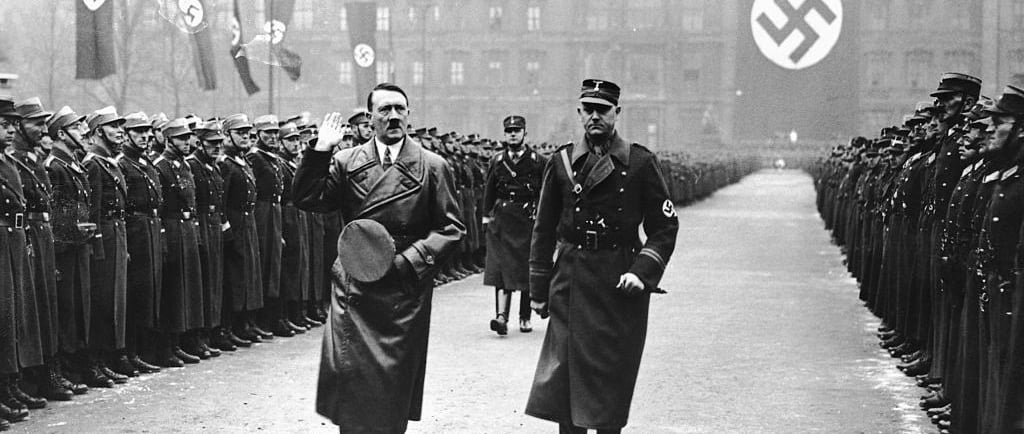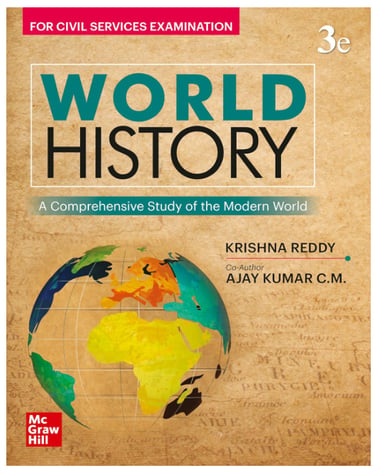Aftermath of World War 1: Causes of World War 2
This article explores the socio-economic and political challenges that arose after World War 1, affecting both Europe and the USA. Understanding these aspects is crucial for civil service examinations, as they contributed significantly to the causes of World War 2.
WORLD HISTORY


Introduction
The post-World War I era (1918-1939) was a period of profound political, economic, and social upheaval across Europe and the world. The war left millions dead, economies shattered, and the old order of empires and monarchies collapsed. The Treaty of Versailles, signed in 1919, marked the official end of the war, but it created deep resentments, particularly in Germany, and paved the way for radical ideologies to take root. During this time, two extremist ideologies, Nazism in Germany and Fascism in Italy, gained prominence. These ideologies, driven by authoritarianism, ultra-nationalism, and anti-democratic tendencies, significantly altered global politics and ultimately led to World War II.
Political and Economic Consequences of World War I
1. Treaty of Versailles:
One of the most significant outcomes of World War I was the Treaty of Versailles, which placed full blame for the war on Germany. Under the treaty, Germany was forced to cede territory, demilitarize, and pay hefty reparations to the Allied powers. These harsh terms led to widespread resentment among the German populace and created fertile ground for extremist movements.
Germany’s humiliation and the economic burden from reparations devastated its economy. Hyperinflation in the early 1920s made the German mark nearly worthless, resulting in unemployment, poverty, and social unrest. This financial turmoil led many Germans to believe that the Weimar Republic, Germany’s democratic government established after the war, was weak and ineffective.
2. Collapse of Empires:
The Austro-Hungarian, Ottoman, German, and Russian empires collapsed at the end of World War I, leading to the formation of new states in Eastern Europe and the Middle East. The redrawing of borders caused ethnic conflicts and political instability.
In Russia, the 1917 Bolshevik Revolution had already overthrown the Tsarist regime, and the establishment of the Soviet Union by 1922 represented the spread of communist ideology in Eastern Europe.
3. Global Economic Depression:
The Great Depression (1929-1939) was a key factor in the rise of extremist ideologies. The global economic crisis devastated economies worldwide, especially in Germany, where unemployment soared, and poverty increased. Economic instability made people desperate for solutions, leading them to support radical movements like Nazism and Fascism, which promised strong leadership and national revival.
The Rise of Nazism in Germany
1. Weakness of the Weimar Republic:
After World War I, Germany’s Weimar Republic was created as a parliamentary democracy, but it was marred by political instability. Frequent changes in government, lack of a stable majority in the Reichstag (parliament), and violent uprisings from both left-wing communists and right-wing nationalists made it difficult for the government to function effectively.
The political system’s weakness, combined with widespread dissatisfaction, gave Adolf Hitler’s National Socialist German Workers' Party (NSDAP), or Nazi Party, an opportunity to rise to prominence. Hitler capitalized on the anger toward the Treaty of Versailles and the belief that Germany had been “stabbed in the back” by internal traitors.
2. Adolf Hitler’s Rise to Power:
Hitler’s charismatic leadership and propaganda were key to the Nazi Party’s growth. He promised to restore Germany to its former glory, revitalize the economy, and create jobs by rebuilding the military and infrastructure. His vision of a racially pure Aryan nation resonated with many Germans who felt marginalized.
In 1933, Hitler was appointed Chancellor of Germany, and within months, he consolidated power by passing the Enabling Act, which allowed him to rule by decree, effectively ending the Weimar Republic and establishing a totalitarian regime. Hitler used his authority to suppress political opposition, dismantle democratic institutions, and promote aggressive nationalism and anti-Semitism.
3. Nazi Ideology:
Ultra-nationalism: The Nazis emphasized the superiority of the German people and the idea of creating a Greater Germany. They sought to overturn the Versailles Treaty, expand German territory, and unite all German-speaking people under one nation.
Anti-Semitism: Hitler’s ideology centered on the belief that Jews were responsible for Germany’s problems, particularly the defeat in World War I. The Nazis launched systematic campaigns against Jewish people, culminating in the Holocaust during World War II, in which six million Jews were murdered.
Militarization and Expansionism: Hitler’s regime rearmed Germany, violating the terms of the Versailles Treaty. His aggressive foreign policy aimed at territorial expansion, starting with the annexation of Austria and the Sudetenland, eventually leading to World War II.
The Rise of Fascism in Italy
1. Post-War Discontent in Italy:
Italy, although on the winning side of World War I, was dissatisfied with the post-war settlement. The Treaty of Versailles did not give Italy the territorial gains it had been promised, leading to widespread discontent. Economic problems, unemployment, and social unrest worsened after the war.
2. Benito Mussolini and Fascism:
In this atmosphere of frustration and chaos, Benito Mussolini emerged as a strong leader promising to restore order. Mussolini founded the Fascist Party in 1919, and by 1922, he had become Italy’s Prime Minister through the March on Rome, a demonstration of power that forced King Victor Emmanuel III to invite Mussolini to form a government.
Fascism, like Nazism, was authoritarian and nationalist, but it also placed strong emphasis on the state over the individual. Mussolini promoted the idea of a centralized, dictatorial state with the motto: “Everything in the state, nothing outside the state, nothing against the state.”
3. Fascist Ideology:
Corporatism: Fascism rejected both capitalism and socialism, advocating instead for a corporatist state where industries were controlled by syndicates representing employers, workers, and the government. This was seen as a way to end class conflict and maintain national unity.
Anti-Communism: Fascists were vehemently opposed to communism, which they viewed as a threat to national stability and unity. Mussolini used this fear of communism to gain support from industrialists and conservatives.
Imperial Ambitions: Mussolini aimed to rebuild the Roman Empire by expanding Italian territory. In 1935, Italy invaded and conquered Ethiopia, showcasing its imperial ambitions and disregard for international norms.
Other Authoritarian Movements in Europe
While Nazism and Fascism were the most prominent radical ideologies, other authoritarian regimes also rose in Europe during the interwar period:
1. Spain: Francisco Franco established a fascist-style dictatorship after the Spanish Civil War (1936-1939). His regime, though distinct from Italian Fascism or German Nazism, shared similarities in its authoritarianism and nationalist focus.
2. Japan: In Japan, militarism and ultra-nationalism grew in the 1920s and 1930s. Japan embarked on an expansionist foreign policy, invading Manchuria in 1931 and later aligning itself with Nazi Germany and Fascist Italy during World War II.
Conclusion
The post-World War I era saw the rise of radical ideologies like Nazism and Fascism, which emerged from the ashes of economic crises, political instability, and a desire for national revival. Both movements rejected democracy and liberal values, instead advocating for authoritarian rule, aggressive nationalism, and militarization. These ideologies thrived on the frustrations and grievances left unresolved by the war and the Treaty of Versailles. The rise of these movements reshaped Europe and the world, leading to devastating consequences in World War II, and leaving lasting scars on international relations and global politics.
For UPSC aspirants, understanding the causes and effects of the post-World War I era is crucial for grasping the global shifts that set the stage for the mid-20th century's most significant conflicts and the eventual formation of the post-war world order.


